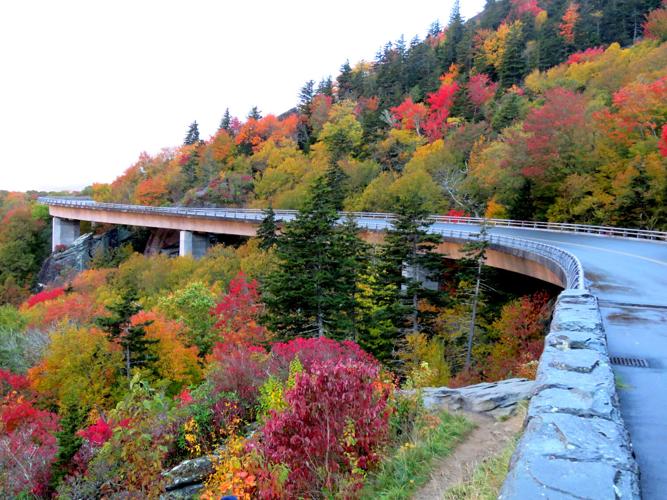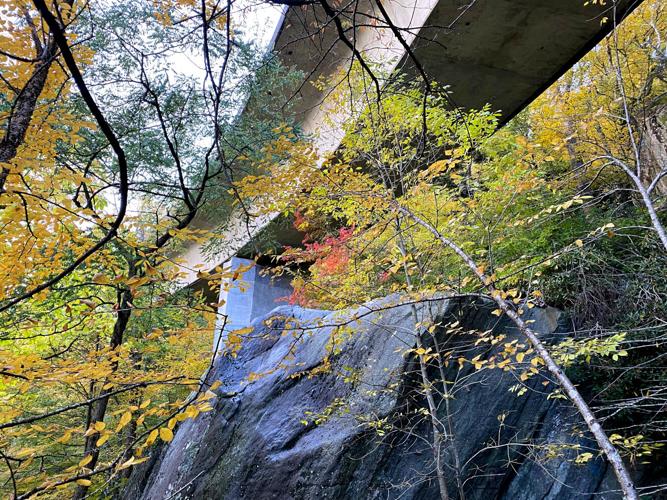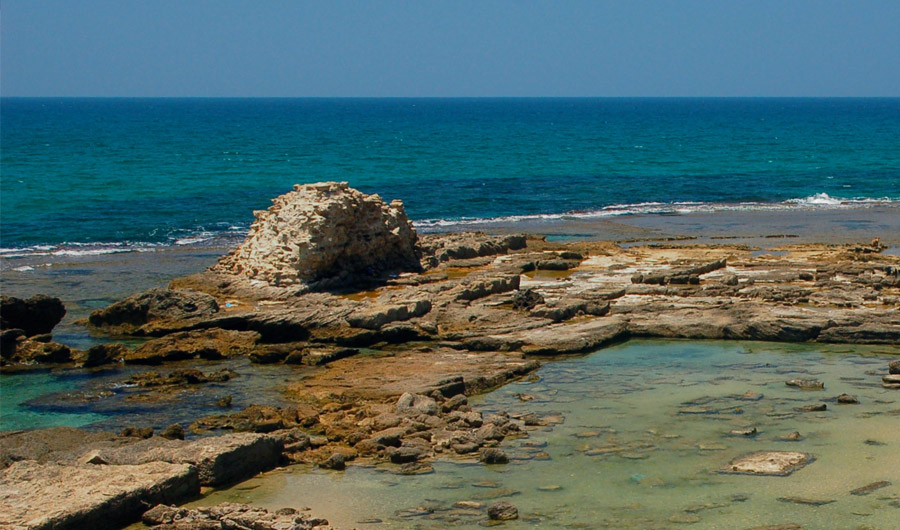
“Bridging Time” — a monthly series featuring photos by Calvin Sneed — highlights steel truss and concrete arch bridges throughout the United States. During his travels, Calvin has taken thousands of photos of more than 1,150 bridges (mostly in the Southeast). He can be reached at [email protected]. This month’s featured bridge is the Linn Cove Viaduct near Grandfather Mountain.
In the beautiful splendor of an autumn morning on the Blue Ridge in the southern Appalachians sits a bridge in a setting that can only be described in one phrase.
“Wildly, insanely, cockeyed lovely.”
Words used by a friend of author Sinclair Lewis years ago to describe the autumn foliage surrounding Lewis’ Vermont home, but also fitting words to describe the fall leaves at Grandfather Mountain, North Carolina, and its lower neighbor, the Linn Cove Viaduct. Ordinarily, the Linn Cove Branch coming down the mountain in a huge ravine is barely a trickle, so by design, the 1,243-foot bridge is mostly spanning the jagged rocks and boulders scattered on the leeward side of the mountain.
The Linn Cove Viaduct was the missing link in the completion of the Blue Ridge Parkway for many years. From the 469-mile parkway beginnings at Rockfish Gap, Virginia, and Cherokee, North Carolina, when approaching exits at mile markers 298 and 305, autumn leaf fans had to detour onto the parallel Yonahlossee Trail (U.S. 221) to cross the tiny Linn Cove Branch to pick up the parkway again.
The Native American word Yonahlossee means “trail of the bear,” and the 14-mile detour detracted from the nature trip the parkway offers.
But how do you build a highway at more than 4,000 feet above sea level, 3,000 feet above the Piedmont below and 1,000 feet down the leeward side of Grandfather Mountain, with rocks and boulders as big as small houses sticking out of the downslope?

For 20 years, engineers, environmentalists, conservationists, preservationists, local landowners and the National Park Service discussed, reasoned, argued, fought and eventually compromised over that very question.
The decision was reached to bridge OVER the boulders, instead of barreling THROUGH them, in an effort to preserve the beauty and ecosystem of that side of the mountain. The result was one of the most complicated bridges ever built.

The $10 million Linn Cove Viaduct is composed of 153 pre-cast hollow tubes each about 8 feet wide, that are connected side by side. They were manufactured inside a special building a short distance away, then trucked up to the bridge site to be set into place.
Each one is shaped to create a sweeping curve around the mountainside and over cliffs and outcroppings. Only one of the segments is straight. The rest are curved.
Instead of being bolted, riveted or welded together, each section weighing 50 tons is epoxied to the next one, using a bridge construction process known as “match casting.” A custom crane moved along the bridge resting on each new segment, lowering and match-casting the next segment into place as the machinery reached the next casting.
If your eyebrows were raised when you read the word “epoxy,” by definition, epoxy is indeed an adhesive mixed with a hardening agent. In other words — glue. As it relates to the Linn Cove Viaduct, the epoxy became as hard as the concrete it was attached to, demonstrated by splotches of resin that we discovered dripped on several of the rocks below, despite efforts to cover the boulders during match-casting.
Steel cables threaded through each pre-cast segment held them in place the length of the bridge. Those cables allowed the epoxy to harden, and they strengthen the bridge today. The bridge construction was done on the deck extensions. The only construction on the ground was foundations for the seven permanent piers the bridge is resting on.
In the seven-mile parkway “missing link,” 12 other bridges were also built, but none more complex, yet spectacular, as the Linn Cove Viaduct on an autumn day. The bridge won several design awards and was designated a National Civil Engineering Landmark by the American Society of Civil Engineers.
“Come little leaves, said the wind one day.
“Come over the meadows with me and play.
“Put on your dresses of red and gold,
“For summer is gone and the days grow cold.”
— A child’s song by poet George Cooper
Anywhere on the Blue Ridge Parkway is wonderful any time of the year. But you just can’t beat the Linn Cove viaduct when the leaves change in the fall. One of its awards notes the bridge is “a magnificent curving ribbon that hugs the rocks and boulders without really touching them.” You’re flying over them on one side, while the valley slopes down east on the other side, all the way to the Atlantic Ocean 300 miles away.
As fall splashes the leaves with almost every hue in the rainbow, ordinary modern bridges get lost in the confusion of color. The Linn Cove Viaduct is all that and a bag of chips. Every autumn, the Linn Cove Viaduct is enveloped in a kalidescope of color, one word floating among its visitors.
Breathtaking.
https://www.timesnews.net/living/featur ... MAIL_ID%5D
=================
Facts about the Blue Ridge Parkway in Southern Appalachia
The Blue Ridge Parkway makes its way through the heart of Virginia's Blue Ridge Mountains. At 469 miles, this scenic drive winds along the Blue Ridge Mountains and offers visitors the opportunity to enjoy some of the best mountain views in the world.
The Parkway is operated by the National Park Service and is the most visited unit in the National Park System.
Travelers can take the Parkway north out of the Roanoke Valley and make their way to Shenandoah National Park and Skyline Drive or south toward Great Smoky Mountains National Park and Grandfather Mountain in North Carolina...

https://www.visitroanokeva.com/things-t ... oqEALw_wcB

